After over 15 years in SaaS and digital product marketing, I've learned firsthand that having a methodical framework pays off tremendously versus taking a scattered approach.
In the early 2010s, I helped launch a remote technical support product. We had what seemed like a stellar product. However, our go-to-market was quite fragmented - loosely defined personas, spray and pray tactics across channels, and minimal metrics tracking.
Despite initial traction, leads dried up quickly and sales cycles stretched endlessly. I realized we needed to regroup around an integrated strategy tailored to customer priorities. Worked closely with the product team to reposition around risk management. Streamlined targeting to security and audit executives. Aligned content and field teams to core narratives which resonated much better.
Within two quarters, our sales qualified lead flow doubled and deal sizes tripled! That's when it truly hit me...structured marketing execution makes all the difference between modest results and exponential success.
I've since systematized a methodology through similar situations faced by other SaaS firms we partnered with. And now I want to pay it forward by sharing these learnings with you in this playbook!
The Significance of a Well-Structured Product Marketing Plan
Let's start by understanding why having a meticulous marketing plan is mission-critical instead of just nice-to-have.
A concrete plan provides clarity on business goals, ideal customer profile, messaging framework, promotional channels to use, and success metrics to track. It aligns stakeholders across departments on priorities to execute flawlessly as a team.
For example, a B2B fintech startup we worked with streamlined their messaging and positioned core banking APIs as an innovation platform to attract modern developers. This resonated well with their buyers and increased qualified leads by 34% quarter-over-quarter.
On the other hand, taking a fragmented approach by randomly trying fancy tactics without an overarching strategy leads to wasteful spending and lackluster results.
So whether you are launching a new product or revamping positioning for an existing one, having a structured marketing plan is table stakes. Now let's dig deeper into the step-by-step process.
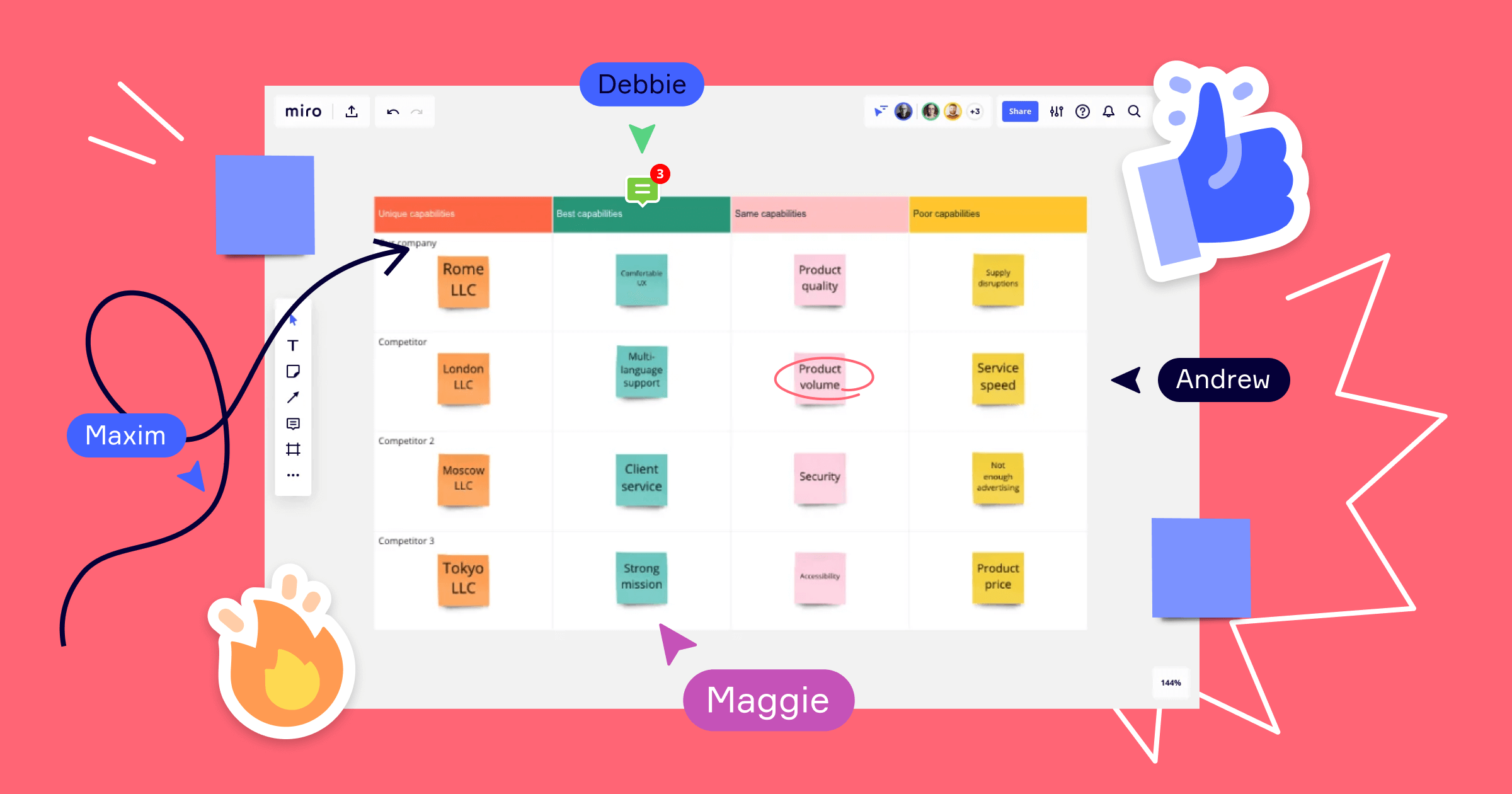
Step 1: Market Analysis and Product Understanding
Analyzing Market Trends and Identifying Opportunities
The groundwork for an effective plan starts with analyzing target markets to identify evolving customer needs, pain points, and changes in the competitive landscape.
- Secondary Research: Use market reports, analyst briefings, academic journals to understand macro trends, market size forecasts, growth drivers and inhibitors, and innovation areas. For example, research by McKinsey on retail banking shaped our perspective for a neobank.
- Competitor Analysis: Study product offerings, positioning and messaging by competitors in your space. Spot gaps that present opportunities for differentiation. We built a competitive audit for a payments processor covering 20+ providers.
- Customer Research: Directly engage target segments through focus groups, interviews, and surveys to gain insights on requirements and problems they face. We run buyer persona studies and journey mapping workshops.
These findings will feed into your positioning strategy later. Continually researching markets is crucial because B2B landscapes evolve rapidly.

In-depth Understanding of Product Features and Benefits
Parallelly, you need absolute clarity on the core value proposition, use cases, features, and benefits delivered by your product.
- Stakeholder Discussions: Engage conversations with leadership, product managers, engineering heads, customer success teams, and other stakeholders to fully grasp product functionality from their lens.
- Product Demos: Attend detailed walkthroughs focused on major modules, capabilities, and end user workflows powered by the product across buyer and user personas.
- Competitive Benchmarking: Perform an in-depth analysis against alternatives in your space to objectively highlight areas where your product excels or lags behind. Build out a comparison table.
- User Testing: Spend time testing the product yourself or observe actual customers using it to experience pain points first-hand during onboarding, configuration, and operations.
Immersing yourself to intimately understand the product and what makes it truly differentiated is so vital for impactful marketing. With this solid baseline, you can make your messaging credible and deliver the right content to move prospects along their buyer's journey.
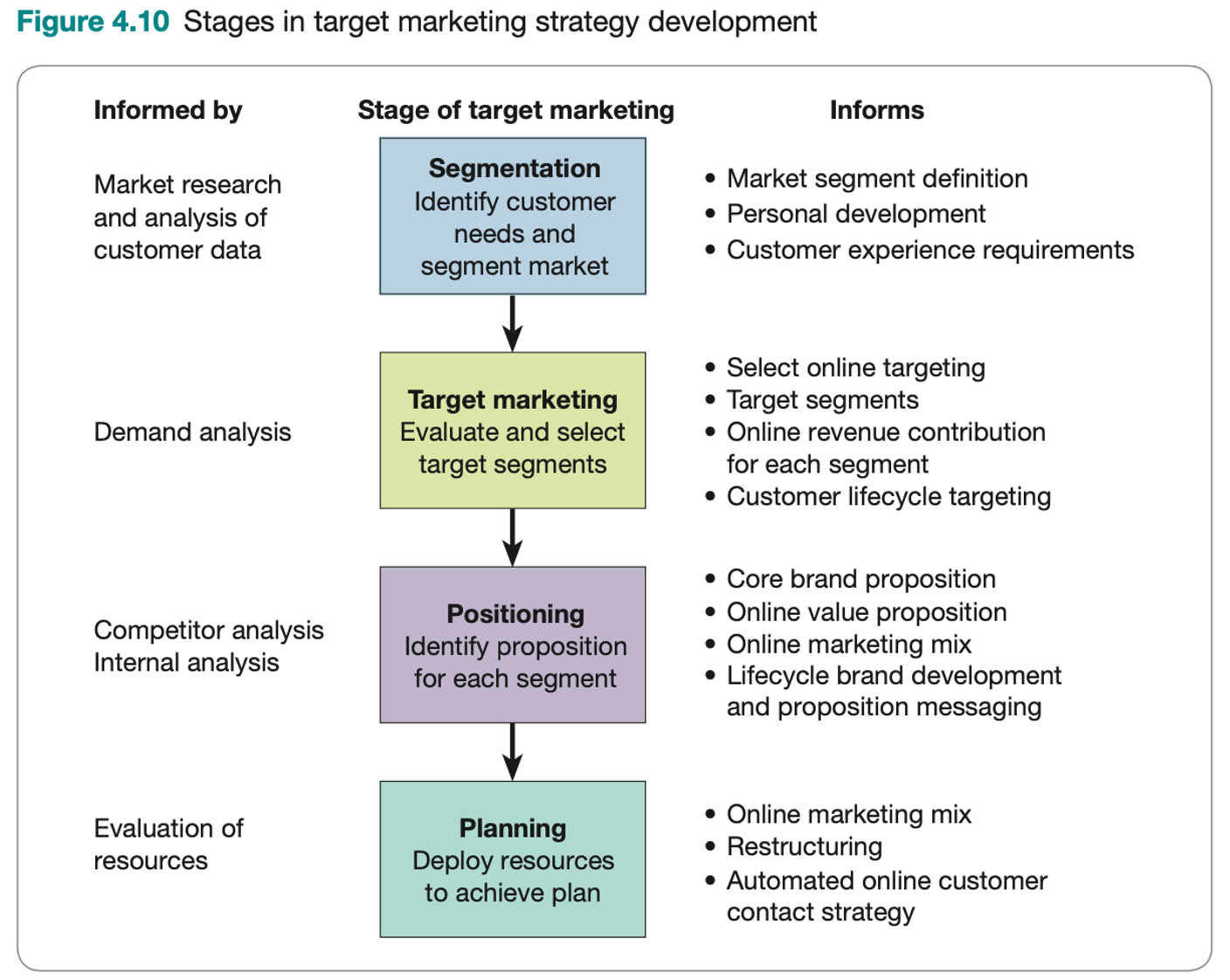
Step 2: Defining Target Customers and Market Segmentation
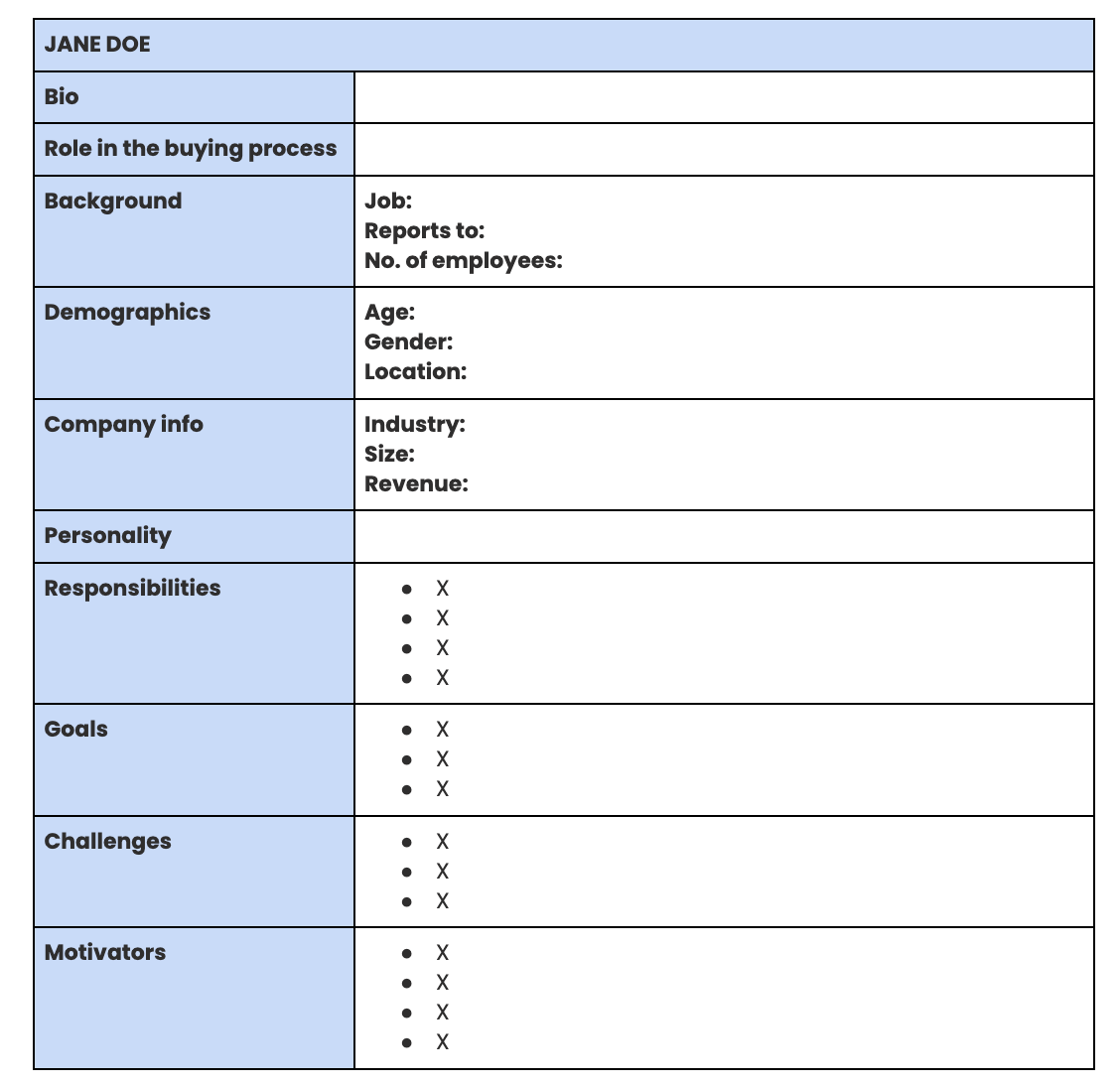
Sample Persona Framework
| Persona | Role | Key Attributes | Goals & Challenges | Value Drivers |
|---|---|---|---|---|
| Sally | IT Applications Manager | Tech savvy, manages ecommerce platforms, cost focused | Enable seamless customer experience, reduce app maintenance overhead | Lower TCO, higher uptime, quicker feature releases |
Who are you creating marketing content for? This is where market segmentation comes in - dividing a broad target market into specific groups with common needs and behaviors relevant to your solution.
Techniques for Identifying and Segmenting Your Audience
Here are proven techniques to accurately carve out personas from your total addressable market:

- Firmographic Segmentation: Group prospects by attributes like industry, company size, geographical location that impact their requirements. For example, we distinguished enterprise-level banks from regional financial institutions for a cybersecurity vendor.
- Technographic Segmentation: Categorize customers based on tech stack, workflows, and processes that your product would digitize or integrate with. For a cloud cost management tool, we designated segments by public vs private cloud, degree of multi-cloud use, and presence of FinOps practices.
- Psychographic Segmentation: Cluster groups based on attitudes, interests, values and priorities that influence their buying decisions. We focused messaging for developers at digital native companies differently from traditional enterprises for an API marketplace.
- Behavioral Segmentation: Distinguish segments as per their stage in the buyer's journey, buying roles, decision team setup and procurement needs. We tailored campaigns for IT practitioners separately from business app owners and executives for an integration platform vendor.
Get granular with 6-8 high-potential personas across these segmentation lenses for optimum relevance and engagement. Map user workflows, integrate the product into those workflows, and quantify potential value addition and ROI for each persona through use cases. This clear alignment between product capabilities and target audience needs builds the bedrock for impactful marketing.

Step 3: Developing Key Marketing Messages and USPs
Buyer Journey Stage Marketing Strategy
| Stage | Goal | Content Types | Channels | Metrics |
|---|---|---|---|---|
| Awareness | Build mindshare of key differentiators | Third-party validation assets like analyst reports, media mentions | Retargeting ads, organic search | Brand search volume, referral traffic |
| Consideration | Highlight capability value proposition | Comparison guides, product demo videos | Youtube video ads, free assessment tools | Video views, tool downloads |
| Evaluation | Assist due diligence with user validation | Case studies, expert interviews, sample ROI models | Targeted email nurturing, chatbots | Sales qualified lead rate, chatbot to demo conversion |
| Expansion | Drive adoption across broader base | Feature release updates, admin best practices guides | In-app messaging, loyalty programs | Account usage data, customer satisfaction score |
Now we arrive at the core pillar of your marketing stack - key messages and positioning conveying the differentiation and value delivered by your product.
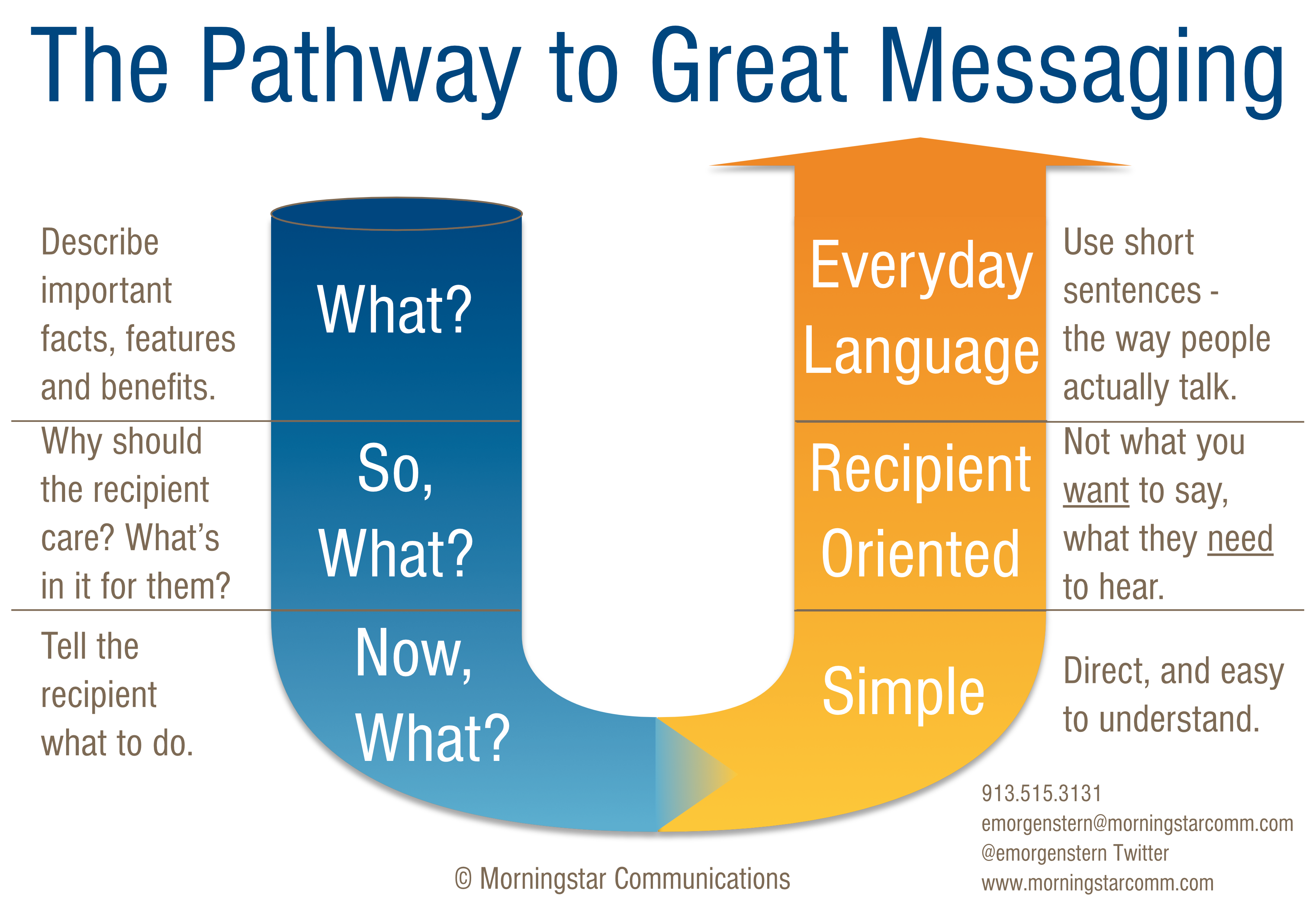
Crafting Messages That Resonate with Your Audience
Tailor messaging themes that capture the essence of your solution's usefulness for each target persona's role and environment:
- Highlight Relevant Features: Communicate capabilities that directly address your buyer's friction areas in their workflow context. For example, ease of third party integrations was accentuated for developer personas of an ETL platform.
- Quantify Value Generation: Include measurable business outcomes enabled by using your product like cost savings, revenue boost, productivity gains, risk reduction and so on. The ROI model resonated very well with CXO personas for a cloud cost analytics firm.
- Use Social Proof: Validate your claims and credibility through client examples, best in class ratings, renowned analyst recognitions, prominent use cases and customer testimonials. The case study series on cloud transformations hugely elevated an IaaS provider.
- Convey Vision and Roadmap: Articulate your long-term vision aligned to market trends and showcase the innovation roadmap to instill confidence in buyers considering long term platform standardization partnerships. The future vision positioning worked wonders for an intelligent automation startup.
As discussed earlier, back messaging with quantifiable metrics and category benchmarks from your competitive analysis for authentic positioning.
Evolve messaging over time as market dynamics shift - for example, hybrid multi-cloud capabilities are now a crucial part of cloud migration narratives unlike a pure public cloud focus earlier.
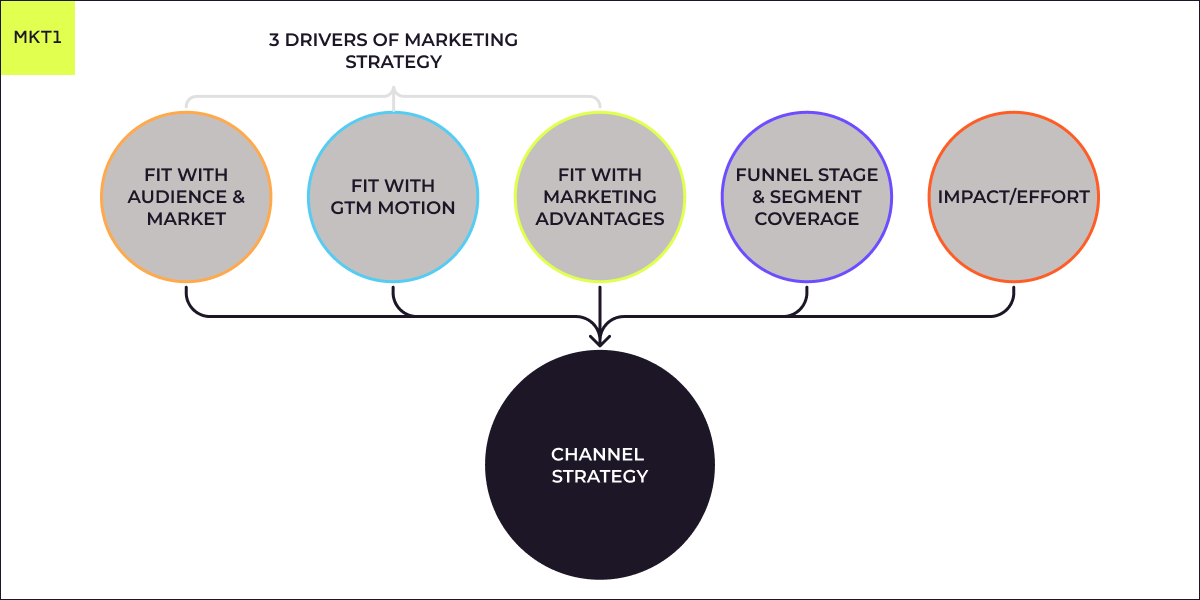
Step 4: Choosing the Right Marketing Channels and Tactics
Channel Effectiveness Analysis
| Channel | Estimated Reach | Cost Per Lead | Lead Conversion Rate | Total Leads | Chosen Tactic |
|---|---|---|---|---|---|
| Content Syndication | 50,000 | $35 | 4% | 2,000 | Guest blogging |
| Paid Search | 80,000 | $55 | 3% | 2,400 | Google Ads |
| Events | 1,500 | $125 | 24% | 360 | Industry conferences |
Now that your messaging and personas are fixed, which channels will you utilize to reach them?
Carefully evaluate and prioritize channels to maximize awareness, engagement and lead conversions through the right mix.
Assessing Different Channels for Optimal Impact
Here is a step-by-step process to assess marketing channels:
- List Relevant Options: Brainstorm channels like organic search, paid search, social media, email marketing, content syndication, events, etc. using your experience and benchmarks.
- Quantify Reach & Frequency: Estimate channel potential in terms of total audience reach, campaign frequency and media consumption habits for each target persona through market studies or channel analytics tools.
- Evaluate Effectiveness: Project channel performance metrics like cost per lead, conversion rates, pipeline velocity and sales cycle compression through past campaign data or industry benchmarks.
- Estimate Costs: Build out likely campaign budgets and resource requirements for delivering desired reach and outcomes across shortlisted high-potential channels.
- Prioritize Channels: Finally, determine marketing mix allocation based on cost-benefit trade-offs and talent availability constraints for integrated multi-touch campaigns.
For example, a balanced portfolio of owned, earned and paid media channels worked well for an enterprise AI software provider targeting IT decision makers - content marketing to nurture prospects combined with intent data triggered programmatic outreach.
Continually assess your channel mix and emphasize better performing ones. Stay updated on new and emerging channels in your space like targeted podcast ads, using communities on Slack or Discord, and more.
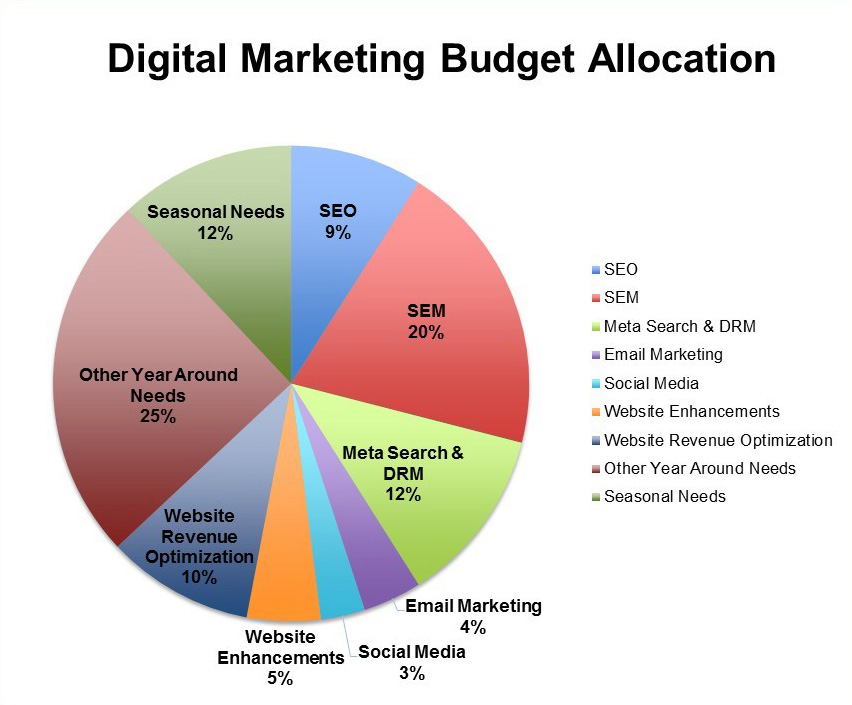
Step 5: Budgeting and Resource Allocation
An intrinsic part of marketing planning is right-sizing your budgets and talent model to achieve scale, pipeline velocity and ROMI targets.
Planning Your Marketing Budget Effectively
Consider these best practices for budget planning:
- Top-Down Budgeting: Work backwards from revenue targets to arrive at lead volume, conversion rate, and cost per lead benchmarks for calculating required marketing spend.
- Bottom-up Budgeting: Aggregate campaign estimates by marketing activities across channels and headcount costs to build an itemized budget from ground up.
- Benchmarking: Research typical marketing expense ratios for your industry, business model, stage of growth and competition intensity to validate budget rationalization. SaaS companies allocate around 20% to over 50% towards marketing annually.
- Historical Trends: Assess past spending, campaign outcomes and pipeline metrics over 3-5 years to right-size budgets through trend analysis and forecasts.
- Testing and Optimization: Continuously test new channels and initiatives with controlled test budgets instead of full scale launches without adequate validation. Case in point - start with a geo-targeted LinkedIn campaign instead of jumping into broader spend before gauging performance.
Right-size budgets to balance short term demand generation targets with long term brand building. Optimize spend towards channels demonstrating efficient customer acquisition and retention. Having clearly defined budget guardrails aligned to KPIs is invaluable.
Step 6: Execution and Management of Marketing Activities
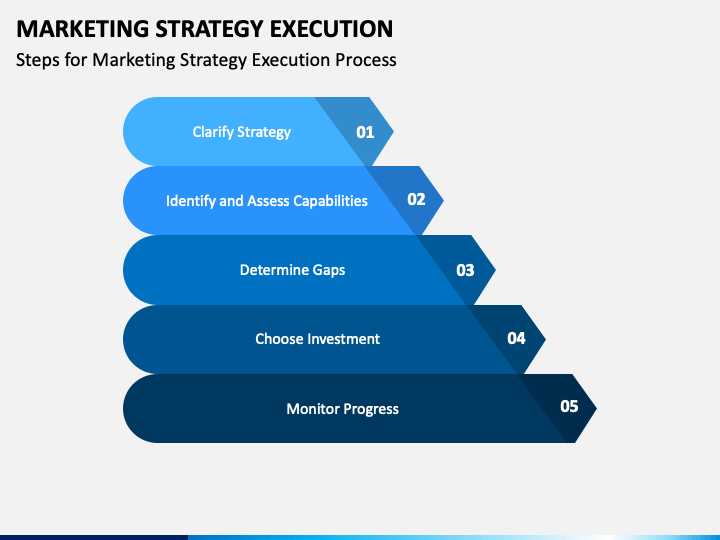
Account-Based Marketing (ABM) Sample Framework
| Target Account | Industry | Personas | Buying Stage | Campaigns | Timeline |
|---|---|---|---|---|---|
| FinancialForce | Fintech | CTO, CFO | Initial Interest | Product capability briefing, Total cost of ownershipComparison kit | Q1 FY2025 planning cycle |
| Contoso | Retail | CMO, Digital GM | Evaluation | On-demand demo, Implementation experience video | Before next budget cycle |
| Fabrikam (UK) | Technology | Regional marketing head | Expansion | Localized use cases and content | Align with regional fiscal year |
The best marketing strategies fail without organized processes for seamless coordination during rollout across stakeholders and milestones tracking.
Best Practices for Effective Execution and Management
Here are proven ways to streamline marketing operations:
- Central Marketing Technology Stack: Consolidate martech tools for automation in campaign creation, email marketing, social posting, analytics, and more instead of using disjointed niche point solutions. Marketing stacks like HubSpot and Marketo foster integration.
- Cross-Department Alignment: Proactively collaborate across sales, customer success, product management, and other groups to coordinate targeted outreach in sync with their buyer engagements.
- Campaign Milestones Framework: Maintain a calendar of key tasks across channels like content creation, social media scheduling, email launch timelines, and lead follow-ups with owners and statuses for timely orchestration.
- Ongoing Performance Tracking: Monitor real-time campaign metrics continuously instead of one-off manual reporting to identify lags for prompt corrective actions - open rates by campaign segment, visitor to lead conversion ratios across referral sources, sales accepted lead lag times, and so on. Marketing automation tools greatly assist here with actionable insights.
- Iterative Optimization: Run regular retrospectives on campaign outcomes and pipeline health to brainstorm improvement areas through A/B testing subjects like email content, subject lines, landing pages, and ad formats.
Set up reliable processes, communication rhythms and tools to executor marketing flawlessly as a well-oiled machine.

Step 7: Monitoring, Measurement, and Adjustment
Campaign Health Scorecard
| Campaign | Target Leads | Actual Leads | Lead Lag Time | Content Consumption | Pipeline Created |
|---|---|---|---|---|---|
| CIO Playbook Launch | 100 | 87 | 4 days | 28% above average | $650K |
| Video Series Promotion | 50 | 42 | 7 days | 22% above average | $230K |
Marketing success cannot be interpreted accurately without robust metrics setting upfront and continuous performance tracking systems.
Key Metrics for Measuring Success and Making Adjustments
Here are the vital marketing KPIs to monitor by stage:
- Brand Awareness Metrics: Social followers growth, share of voice in online discussions, unaided brand recall surveys, and web visitors.
- Lead Generation Metrics: Leads by source, sales qualified lead conversion rates, cost per lead, lead to customer conversion ratios, pipeline coverage by tier, and sales accepted lead lag time.
- Customer Engagement Metrics: Email open, clickthrough and unsubscribe rates, content consumption, event participation rates, and app usage intensity scores.
- Business Impact Metrics: Customer acquisition costs, lifetime value, retention by cohort, product qualified lead to revenue conversion benchmarks, social advocacy index, and marketing influenced pipeline & revenue.
Track relevant macro and micro metrics tailored to your business and campaign goals. Identify data gaps early on and implement analytics tracking to address them.
Do quarterly marketing reviews, share key achievements and learnings across the org, and reallocate budgets towards better performing levers. Become a data-driven adaptive marketing machine!
The Continuous Cycle of Product Marketing Excellence
We have covered a lot of ground together in this detailed walkthrough - from researching markets and products, persona development and messaging, channel selection and budgeting to campaign execution and optimization.
While this may seem like a sequential process, product marketing is actually continuous. Dynamic markets shift constantly necessitating regular messaging revalidation, new competitors emerge requiring updated positioning, channel efficiencies change needing resource reallocation, and so on.
Use the methodology outlined here as an overarching blueprint by tailoring components to your context. Be flexible and adapt plans to accommodate emerging scenarios without losing sight of the big picture.
I hope these practical steps replete with real examples provide you actionable clarity on structuring scalable, high-performance product marketing plans from the ground up. Now go out there, innovate fearlessly and transform markets!






